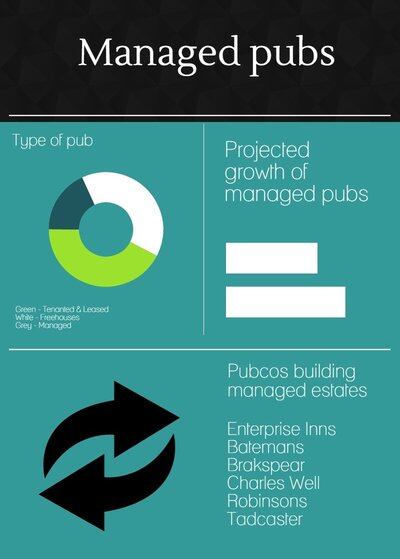Interesting and different political and socioeconomic reasons underlie each of these strategies — and perhaps, in themselves, the actions of a dozen companies, together owning about 800 pubs, don’t represent a trend.
But now, as the UK’s biggest pub company — Enterprise Inns, with 5,500 pubs — is also beginning to develop its own managed estate, it really is worth paying attention and starting to consider what this means for the industry.
In the short term, the numbers are going to be relatively small: ten pubs within the next few weeks; maybe 50 by this time next year. That would represent just 1% of Enterprise’s estate, but it could and probably will scale up quickly from there.
It would be a folly for a business the size of Enterprise to just dabble in the managed pub sector because this is a labour-intensive model that rewards scale and efficiency.
The need to have a dedicated head office function — to include HR, finance, marketing and operations management with a much smaller ratio of area managers to pubs than you’d find in tenanted and leased operations — plus the direct employment of all pub staff, means that a high levels of fixed costs are incurred from day one, but fall proportionally as the business grows.
Remember, too, that Enterprise’s new group commercial director Paul Harbottle is a former chief operating officer of JD Wetherspoon, where he had responsibility for several hundred sites. And while he has told the Publican’s Morning Advertiser (PMA) that he will only be considering “a very small proportion” of the company’s tenanted and leased estate for conversion to managed, he will certainly have plenty to choose from.
The rule of thumb is that a managed house needs to turn over about £1m a year to be viable. And that in itself limits the number of such pubs the market can sustain.
Simon Chaplin of commercial property agency Christie + Co, recently told the PMA that the number of managed houses, which currently stands at about 9,200, could grow to 12,000, due to a combination of disposals from and conversions by tenanted pub companies, but that’s “probably the limit”.
“There just isn’t the capacity in the country to expand more than that, unless we all start eating and drinking out an extra 30% a week.”
Managed pubs are unlikely to overtake the number of tenanted and leased pubs (c21,500) or freehouses (20,000) any time soon. But expect high-end pub lease opportunities to start dwindling in due course, as pub companies become more confident and better equipped to exploit their potential themselves.
In a sense, it’s nothing new. Plenty of pubcos operate a mixed estate, but it is a definite direction of travel that might — in time — reshape our pub landscape once again.

